Celebrating Berklee's Faculty Pioneers
When the 160 Massachusetts Avenue building opens in June 2014, the facility’s six student lounges will be dedicated to late faculty members who were standout pioneers in their work at the college. For five of the rooms, two honorees will share the dedicatory plaque. The sixth room will honor Berklee’s first provost, Robert Share. What follows is a short career summary of each and their contributions to the college.
Alan Dawson and Joe Viola
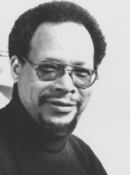
Alan Dawson (1929–1996) made his mark in the music world as a drum instructor, but he also had a distinguished performance career. Dawson taught at Berklee for 18 years, and his students included Terri Lyne Carrington, Steve Smith, Kenwood Dennard, Vinnie Colaiuta, Harvey Mason, Joe LaBarbera, John Robinson, and more. Perhaps his most famous non-Berklee student was the legendary Tony Williams, who began studying with Dawson at age nine.
During the early 1950s, Dawson began touring and recording with a host of jazz luminaries. Among those he worked with were Lionel Hampton, Quincy Jones, Rahsaan Roland Kirk, Bill Evans, Sonny Rollins, Dave Brubeck, and others. He balanced his teaching and performing careers until a back injury in 1975 curtailed his performance and teaching work. He left Berklee in 1975 but continued to teach a small group of students privately. Dawson was highly regarded as a drummer for his speed, precision, control, and remarkable independence between hands and feet. As a teacher, he stressed mastery of drum rudiments and is credited with raising the standards for teaching drum technique.
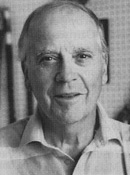
In a 1995 presentation of the Berklee President’s Award to Joe Viola (1920–2001), then-President Lee Eliot Berk stated, “Joe is one of the cornerstones upon which the college’s reputation for excellence is built.” Berk went on to describe Viola’s achievements in teaching and publishing as “intrinsic to the development of instruction at Berklee.” As the founding chair of Berklee’s Woodwind Department, Viola guided the development of wind players and others during his five decades at Berklee. Among his early students were Herb Pomeroy, Ray Santisi, Charlie Mariano, and Quincy Jones. He later mentored Joe Lovano, Jerry Bergonzi, Bill Pierce, Donald Harrison, Antonio Hart, and others.
A Boston native, Viola attended Berklee (when it was known as Schillinger House) as a student after serving in the U.S. Army during World War II. A rounded woodwind player, Viola played clarinet, saxophone, oboe, English horn, and flute, and began teaching at Schillinger House in 1946. Published during the 1960s, his groundbreaking, three-volume method The Technique of the Saxophone remains part of Berklee’s curriculum. Its second volume was adapted for bass, brass, flute, guitar, vibes, and violin and translated into German, Italian, and Japanese. Over the course of his 49 years at Berklee, Viola helped build the foundation for the careers of hundreds of wind players.
Dean Earl and William Leavitt
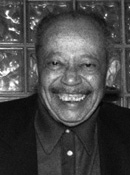
Everett “Dean” Earl (1910–2002) made a name for himself in the Boston area, first as a performer and, later, as a Berklee faculty member. He became the house pianist at Boston’s Hi Hat Club and while playing there and at other establishments (such as the Savoy and the Southland Café), he befriended Count Basie and backed such artists as Charlie Parker, Billie Holiday, Sonny Stitt, and Ben Webster, to name a few. Among the hundreds of students he taught at Berklee during his 41-year tenure were Bruce Hornsby and Cyrus Chestnut, as well as many future Berklee faculty members.
During the 1930s, Earl cut his musical teeth playing for rent parties around his Brooklyn neighborhood and touring with a vaudeville act, before serving in the Army Air Corps during World War II. He used his GI Bill® benefits to further his studies at Schillinger House beginning in 1953. Boston club owner Eddie Levine dubbed the pianist “Dean,” stating, “We have Duke Oliver and King Creole; you need a new name.” The moniker stuck. In 1961, Earl joined the faculty, where his musical tutelage and upbeat personality endeared him to two generations of Berklee students. He taught until shortly before his passing in 2002.
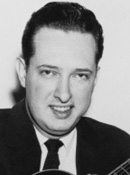
Bill Leavitt (1926–1990) enrolled at Schillinger House in 1948 and was only the third guitarist to study at the school. After finishing his studies, he became a busy arranger, composer, and studio guitarist in the Boston area. He wrote arrangements for top singers including Ella Fitzgerald, Patti Page, and Andy Williams. He also cowrote the song “My Baby’s Comin’ Home,” which became a hit in 1953 for Les Paul and Mary Ford.
in 1965, Leavitt replaced Jack Petersen as the chair of Berklee’s Guitar Department, and he began developing a pedagogy for pick-style guitar. He incorporated some of Petersen’s ideas with his own concepts and original compositions. The resulting three-volume A Modern Method for Guitar has been a component of Berklee’s guitar curriculum since the late 1960s, and a top seller for Berklee Press.
During his 24 years at Berklee, Leavitt taught countless guitar students with many going on to make their mark in the music world, including John Abercrombie, Bill Frisell, John Scofield, Mike Stern, and Steve Vai.
John Bavicchi and Jeronimas Kacinskas
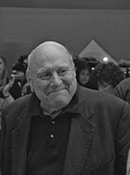
John Bavicchi (1922–2012) joined the Berklee faculty in 1964 and assisted founding Composition Department Chair William Maloof in developing the curriculum for Berklee’s traditional classical music courses in composition, music theory, conducting, and more. Back then, Berklee was focused heavily on jazz, and, as Bavicchi once said, “Bill Maloof and I were like square pegs in round holes. I took advantage of that to show the kids that the square pegs knew some things that the round ones didn’t.” Students revered Bavicchi as an expert on classical music, and a number of his students went on to become celebrated composers in classical, jazz, film, and other musical genres. Many members of the Berklee faculty also studied with Bavicchi as undergraduates.
A prolific and accomplished composer in his own right, Bavicchi wrote hundreds of works for orchestra, concert band, chamber ensembles, chorus, and solo instruments. His music was firmly rooted in 20th-century compositional techniques, but he was also an ardent champion of the romantic-era music of Beethoven and Schumann. Bavicchi continued teaching directed-study students at his home until shortly before his passing in December 2012 at the age of 90.
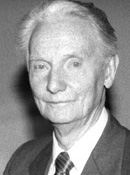
It was John Bavicchi who recommended that Berklee founder Lawrence Berk hire Lithuanian-born composer and conductor Jeronimas Kacinskas. An esteemed musician in his home country, Kacinskas had conducted more than 1,000 orchestral performances, opera concerts, and radio broadcasts in his homeland before he and his wife fled Lithuania’s Soviet invaders during World War II. After settling in America in 1949, Kacinskas befriended Bavicchi, who helped him find work as a conductor and teacher. Kacinskas began teaching composition and conducting at Berklee in 1967.
During the course of his 19 years at Berklee, Kacinskas made a deep impression on the countless students he taught. He also continued composing actively, writing masses, cantatas, and string quartets. Although all but one of his prewar compositions (symphonies, choral, and chamber works) were lost during his wartime exodus, his reputation as a celebrated musician was never forgotten in the Baltic States. Following the fall of communism, Kacinskas returned to his native Lithuania for the first time in 1991 to be honored with a national prize for composition and a six-concert celebration of his music. Kacinskas passed away in 2005 at the age of 98.
John LaPorta and Herb Pomeroy
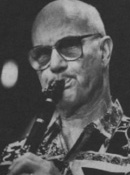
Philadelphia-born John LaPorta (1920–2004) began playing the clarinet at nine years old and picked up the saxophone as a teenager. By the time he was 20, he was touring the country with various bands. He earned both his bachelor’s and master’s degrees from Manhattan School of Music. LaPorta performed and recorded with a range of jazz musicians including Charlie Parker, Lester Young, Dizzy Gillespie, Charles Mingus and Miles Davis, and with classical musicians Leonard Bernstein, Igor Stravinsky, and Leopold Stokowski. He was also a founding member of the National Association of Jazz Educators.
In 1962, LaPorta came to Berklee and began working with Guitar Department Chair Jack Petersen to codify methods for teaching chord scales and melody and improvisation. Their approach was quickly disseminated across the nation. LaPorta was also the founding chair of Berklee’s Instrumental Performance Department and had a special gift for guiding students to reach their full potential as instrumentalists. Scores of grateful alumni remember him for his clear teaching of the nuts and bolts of jazz and improvisation during his 37 years at the college.
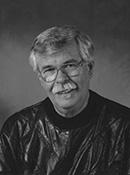
Jazz composer, bandleader, and trumpeter Herb Pomeroy (1930–2007) studied at Schillinger House until 1952 before going on tour as a jazz trumpeter with the Stan Kenton and Lionel Hampton big bands. He returned to Berklee as a faculty member in 1956 where he developed his renowned Line Writing courses, a method for composing and arranging for big band that became one of the hallmarks of his 111 semesters as a Berklee educator. His courses on the music of Duke Ellington were also widely celebrated.
Pomeroy worked with Berklee’s most advanced students, many of whom went on to distinguished careers as composers, arrangers, producers, performers, and educators. They include Arif Mardin, Alan Silvestri, Rob Mounsey, Alf Clausen, and Hal Crook, to name a few. Additionally, he led the 16-piece Herb Pomeroy Orchestra and released four critically-hailed albums with the group. Following his final semester as a teacher at Berklee in May of 1995, Pomeroy was awarded the college’s honorary doctor of music degree at a ceremony that also honored James Taylor and Natalie Cole. Pomeroy is fondly remembered for his inspirational teaching, beautiful playing, and warm sense of humor. He died in 2007 at the age of 77.
Terry Becker-Boyle and Robin Coxe-Yeldham

Terry Becker Boyle (1950–2005) had three successful careers: the first as a professional dancer, the second as a recording engineer, and the third as an educator at Berklee. Becker-Boyle helped break new ground for female engineers in a then-male dominated recording studio world. She quickly distinguished herself working with top artists such as Bonnie Raitt, Jackson Browne, Steely Dan, Wayne Shorter, and many more, and won a Grammy Award for her engineering work for Taj Mahal in 2000. Becker-Boyle embarked on her third career as an educator when she joined the Berklee faculty in 1999 to teach in the Music Production and Engineering Department.
Becker Boyle spent the later years of her life at Berklee teaching basic and advanced recording, mixing, remixing, and introduction to surround-sound mixing courses. In 2003, she became the college’s director of special programs in Los Angeles. She began her teaching career as technology was rapidly transforming the music industry and helped her students to find their way in the changing field. “Our graduates are dealing with a new set of rules,” she said. “I wish them all luck and hope they will make contributions to the legacy of contemporary music.”
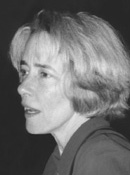
Like Becker Boyle, Robin Coxe-Yeldham (1952-1999) was a bellwether for women in the music-engineering field. In 1982, she began teaching audio engineering courses at Berklee, one year before the MP&E Department was established. Former MP&E Department Chair Don Puluse once referred to Coxe-Yeldham as the “heart and soul of the department.” In 1995, she received a special award from the Audio Engineering Society naming her the “first lady in audio education in America.” Berklee has since named in her honor a scholarship awarded annually to an outstanding female MP&E student at Berklee.
Coxe-Yeldham engineered several albums for a diverse roster of artists including jazz bassist Steve Swallow, cla ssical chamber group Trio Sonata, and vocalist Gail Wynters. Coxe-Yeldham was also a gifted graphic artist and served as the illustrator for the highly regarded textbook Sound Advice: The Musicians Guide to the Recording Studio penned by her colleague, the late Wayne Wadhams.
Robert Share
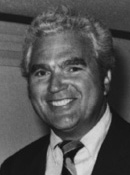
When he was 17, Robert Share (1928–1984) was one of Lawrence Berk’s first three students at his 209 Massachusetts Avenue teaching studio. A few years later in 1945, Berk hired Share as a teacher at Schillinger House. He proved to be a gifted educator and taught the Schillinger System of composition as well as music theory, harmony, and scoring. Among Share’s students was Gary Burton, who once said, “Bob Share’s class organized harmony for me. And I wasn’t alone. The people who went on to create [Berklee’s] harmony department all learned their harmony from Bob.”
Share later became an administrator at the college and helped Lawrence Berk realize his vision for the school by overseeing tasks ranging from supervising the recording of the Jazz in the Classroom LPs to ordering equipment and classroom furnishings for the school. He was named Berklee’s provost in 1979. Sadly, Share suffered a fatal heat attack while working at his desk in 1984. His tireless efforts during more than 30 years of service to the college helped secure the foundation upon which Berklee continues to build.




